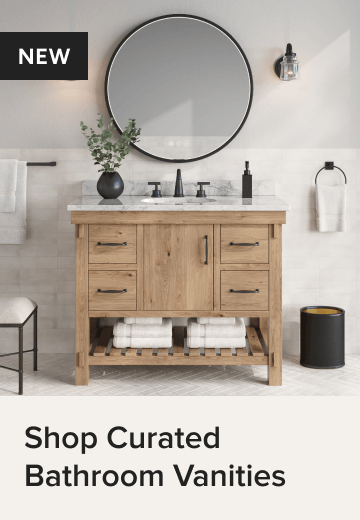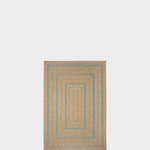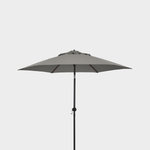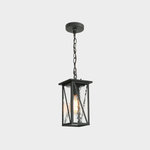Houzz Tour: An Architect and a Designer at Home at The Sea Ranch
On California’s Sonoma Coast, a designing duo create a stylish getaway in a famed planned community of modernist homes
Eight years ago, architect Geoff Campen and architectural designer Diana Ruiz zipped 2½ hours up Highway 1 from their home in San Francisco to The Sea Ranch, a planned community that’s become a favorite destination for design enthusiasts and lovers of the rugged Sonoma County coastline. By the time their one-week vacation was over, they’d begun daydreaming about building a Sea Ranch spot of their own. That dream is now a reality in the form of a one-bedroom glass-and-cedar-sided “object” with forest and ocean views, a flexible floor plan and cool experimental design details befitting two pros who lucked out with the ideal clients: themselves.
Finding the right site was just the first of several hurdles. All home design plans at The Sea Ranch must go through an extensive review and approval process put in place to preserve the community’s cohesive architectural aesthetic and environmental ethos.
“The general idea in The Sea Ranch is the houses and buildings share and complement the land. That’s part of why we liked The Sea Ranch,” Campen says. “Of course, being an architect [and designer], we tried to challenge some of the typical sensibilities a little bit through some of the geometries and shapes.”
For example, the home is low in the front and taller in the back, giving it the appearance of an “object” that sits down and shares the landscape with the trees rising behind it, Campen says. Technically, the roof is a modified gable, which is common among homes at The Sea Ranch — but “the gable just goes from corner to corner instead of from the middle of the front to the middle of the back,” he says.
The exterior is clad in vertical cedar siding, a material traditionally used in the neighborhood. A semitransparent black stain through which some of the natural wood is visible helps the home recede into the trees’ shadows.
“The general idea in The Sea Ranch is the houses and buildings share and complement the land. That’s part of why we liked The Sea Ranch,” Campen says. “Of course, being an architect [and designer], we tried to challenge some of the typical sensibilities a little bit through some of the geometries and shapes.”
For example, the home is low in the front and taller in the back, giving it the appearance of an “object” that sits down and shares the landscape with the trees rising behind it, Campen says. Technically, the roof is a modified gable, which is common among homes at The Sea Ranch — but “the gable just goes from corner to corner instead of from the middle of the front to the middle of the back,” he says.
The exterior is clad in vertical cedar siding, a material traditionally used in the neighborhood. A semitransparent black stain through which some of the natural wood is visible helps the home recede into the trees’ shadows.
Campen and Ruiz installed the same black-stained cedar siding on the ceilings throughout the home. The simple interior palette also includes white oak paneling, white interior walls (Benjamin Moore’s Wedding Veil) and a concrete floor on the lower level with radiant heating built in — the well-insulated home’s only heating source. “It’s temperate inside all the time, but there’s no moving air with radiant [heating],” Campen says. The home is also wired for solar, which the couple plan on installing when the budget permits.
In the open dining and living space seen here, large horizontal Fleetwood aluminum windows frame the view of the meadow and Pacific beyond it. Above the windows and around the home’s entire first floor at that same level is a shelf outfitted with linear uplighting and downlighting. Roller shades that blend with the window frame are mounted below it.
“We thought about doing the whole recessed-shade thing, but it’s kind of an expensive detail,” Campen says, adding: “If there’s a box and it’s recessed, everything gets a bit chunkier and bigger. So I kind of like the casualness of just applying it underneath.”
In the open dining and living space seen here, large horizontal Fleetwood aluminum windows frame the view of the meadow and Pacific beyond it. Above the windows and around the home’s entire first floor at that same level is a shelf outfitted with linear uplighting and downlighting. Roller shades that blend with the window frame are mounted below it.
“We thought about doing the whole recessed-shade thing, but it’s kind of an expensive detail,” Campen says, adding: “If there’s a box and it’s recessed, everything gets a bit chunkier and bigger. So I kind of like the casualness of just applying it underneath.”
Need a pro for your home remodeling project?
Let Houzz find the best pros for you
Let Houzz find the best pros for you
This view offers a better sense of the home’s innovative floor plan, one example of how Campen and Ruiz used the space as a laboratory for their design ideas. (Campen notes that they perused other projects on Houzz for ideas as well.)
“The basic organization of the house is all very open,” Campen says. “The only doors in the house are going into the bathrooms. So this kitchen surrounds the powder room and is open on both sides. It connects the back of the house with the front of the house, and the kitchen kind of becomes an L, but the opposite L of what a kitchen typically is.… That opposite L, and how it integrates with the space, was something we definitely wanted to try, and we think it works really well.”
Down the hall on the left of the photo, you can see the “guts” of the kitchen, which disappear behind a curtain when not in use. Its budget-friendly cabinets are from Ikea and are topped by a laminate counter. Hiding the kitchen’s utilitarian elements behind a drape allows the cleaner, more elegant main part of the kitchen to take center stage.
“The basic organization of the house is all very open,” Campen says. “The only doors in the house are going into the bathrooms. So this kitchen surrounds the powder room and is open on both sides. It connects the back of the house with the front of the house, and the kitchen kind of becomes an L, but the opposite L of what a kitchen typically is.… That opposite L, and how it integrates with the space, was something we definitely wanted to try, and we think it works really well.”
Down the hall on the left of the photo, you can see the “guts” of the kitchen, which disappear behind a curtain when not in use. Its budget-friendly cabinets are from Ikea and are topped by a laminate counter. Hiding the kitchen’s utilitarian elements behind a drape allows the cleaner, more elegant main part of the kitchen to take center stage.
The main kitchen’s cabinets are a mix of off-the-shelf cabinets and custom-made white oak shelving. The countertops are another of the designing duo’s experiments. They’re made from raw steel with a black wax finish that offers protection — to a point.
“Raw steel, you know, it changes. So it looks different now than it did in the pictures,” Campen says. “Water droplets, anything that is left on it, does leave a mark.… We were kind of hovering around, trying to protect it as much as possible for a while. And then you get a few rings on there and it doesn’t matter anymore.”
“Raw steel, you know, it changes. So it looks different now than it did in the pictures,” Campen says. “Water droplets, anything that is left on it, does leave a mark.… We were kind of hovering around, trying to protect it as much as possible for a while. And then you get a few rings on there and it doesn’t matter anymore.”
The beautiful blue kitchen backsplash tile is from Bay Area-based Heath Ceramics, as are the colorful dishes displayed in the open shelving.
In collaboration with Heath, painter and sculptor Brendan Monroe created the wavy accent tiles that are integrated into the running bond tile pattern.
Find bathroom tile inspiration
In collaboration with Heath, painter and sculptor Brendan Monroe created the wavy accent tiles that are integrated into the running bond tile pattern.
Find bathroom tile inspiration
The kitchen wraps around to the rear of the house, where there’s shared studio and office space. On the left side of this photo, you can catch a better glimpse of the utilitarian part of the kitchen.
Vertical windows in the back of the house frame the forest’s tall redwoods and fir trees. This area also has a guest bedroom hidden in plain sight.
Ta-da! A Murphy bed pulls down from the custom white oak cabinetry, and linen-blend drapes hung on ceiling tracks enclose the space both to block light and to offer privacy to guests. It’s a simple but genius space-saving idea.
“Ninety-eight percent of the time, it’s all open, without the Murphy bed,” Campen says. “We didn’t want to spend a lot of the extra square footage in the house on a separate guest room. Because while we love people to come visit, it doesn’t happen all that often.”
“Ninety-eight percent of the time, it’s all open, without the Murphy bed,” Campen says. “We didn’t want to spend a lot of the extra square footage in the house on a separate guest room. Because while we love people to come visit, it doesn’t happen all that often.”
Setting aside dedicated studio space in the house was paramount, however. Campen mostly paints and drafts, whereas Ruiz makes fiber art, some of the materials for which you can see here.
“[Her artwork is] very contrasting to mine, which is very angular and regimented and hers is very loose and natural,” Campen says.
“[Her artwork is] very contrasting to mine, which is very angular and regimented and hers is very loose and natural,” Campen says.
Instead of formal bathrooms, the home has a powder room on each floor, plus a shower room across from the powder room on the lower level, seen here, that offers enough room to change clothes.
Separating the shower area is another design experiment that Campen has deemed a success.
Shop for shower fixtures
Separating the shower area is another design experiment that Campen has deemed a success.
Shop for shower fixtures
Covering the stair treads with the same waxed raw steel used on the countertop has had a more mixed result. The couple really like the look but admit it’s slippery. “We can be very careful down the stairs, but I probably wouldn’t use that for for a client project,” Campen says.
The space under the stairs conceals the water heater and boiler, as well as storage space.
The space under the stairs conceals the water heater and boiler, as well as storage space.
In the lofted bedroom, the floor is simply painted plywood softened by a felted-wool area rug by Peace Industry.
The vintage wall unit was a total score: One of Klopf Architecture’s clients planned to toss it during the renovation of their Eichler home but gave it to Campen when he expressed interest. He and Ruiz use it to hold decorative items picked up through travels and made by friends.
The vintage wall unit was a total score: One of Klopf Architecture’s clients planned to toss it during the renovation of their Eichler home but gave it to Campen when he expressed interest. He and Ruiz use it to hold decorative items picked up through travels and made by friends.
Opposite the unit, above the bed, you can see pieces created by Ruiz, including a quilted wallhanging and crocheted helmets sitting on the white oak cabinetry. The built-in contains integrated reading lights, and its top lifts to provide storage space.
All of the tile in the house, including that pictured here on the upstairs powder room’s floor, is made from seconds and overstock gathered over several visits to Heath Ceramics’ Sausalito showroom and factory.
“The dual-tone part in the upstairs was an effect that was necessitated by the tile that we were able to find,” Campen says. “That kind of blue tile is a dual glaze, and those don’t come around very often in their overstock or seconds. So we had to do a combination with another tile, but I think, at the end, it worked out great.”
“The dual-tone part in the upstairs was an effect that was necessitated by the tile that we were able to find,” Campen says. “That kind of blue tile is a dual glaze, and those don’t come around very often in their overstock or seconds. So we had to do a combination with another tile, but I think, at the end, it worked out great.”
You can see another Peace Industry rug in this bird’s-eye view of the home’s lower level. The Barcelona chair is one of a set given to Campen by a former boss, and the chandelier is from Avenue Lighting’s Fairfax collection.
Just outside the living room and entryway is a deck made from unstained, sealed redwood. Set up into the trees, the home has protection from the area’s steady coastal winds, making this an inviting space for ocean gazing.
To fully take advantage of the home’s setting, Campen and Ruiz created view corridors from the back of house through to the front, which you can see in this image looking west from the rear of the house.
“No matter where you are in the house, you always have some semblance of the view that goes out towards the ocean and some semblance of the view that is back in the trees,” Campen says.
“No matter where you are in the house, you always have some semblance of the view that goes out towards the ocean and some semblance of the view that is back in the trees,” Campen says.
The couple still keep a small rental in San Francisco, and they appreciate the urban energy and culture even more in contrast with the Sonoma Coast’s serenity and natural beauty, Campen says. But at the end of the day, it’s hard to beat a home of one’s own at The Sea Ranch.
More on Houzz
Tour more homes
Hire a local design pro
Shop for your home
More on Houzz
Tour more homes
Hire a local design pro
Shop for your home


















House at a Glance
Who lives here: Architect Geoff Campen and his wife, architectural designer Diana Ruiz
Location: The Sea Ranch, Sonoma County, California
Size: About 1,670 square feet (155 square meters); one bedroom and two half bathrooms, plus a shower room
General contractor: Empire Contracting
Structural engineer: ZFA Structural Engineers
The Sea Ranch development — a paragon of West Coast modernism founded in the 1960s — comprises privately owned homes and lots, an extensive trail system and a handful of recreational facilities along a 10-mile stretch on either side of California’s iconic Highway 1. Campen and Ruiz’s home is on the eastern side of the road, where the coastal meadows begin to rise into the wooded hills.
“The house is kind of amongst the trees, and in the forest a little bit. And the front of the house has the ocean view. So we were pretty lucky to be able to find this site, in that it had a little bit of both,” says Campen, a partner at San Francisco-based Klopf Architecture, a Best of Houzz-winning firm.
Find an architect near you